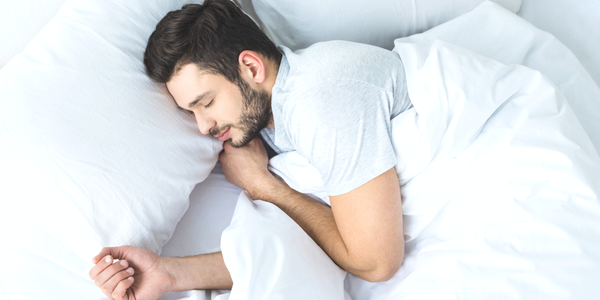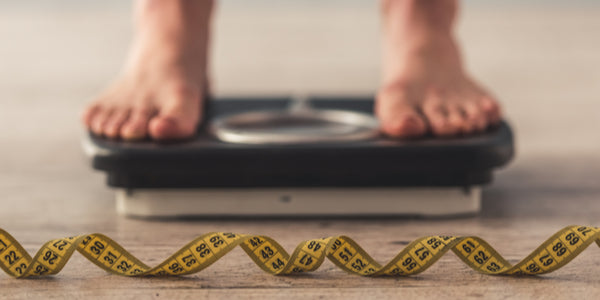
Many people are aware of the physical and mental benefits of sleep, but what about how different sleep positions can impact health? Although it may seem far-fetched, switching up the way you steal those Zzzz's at night can transform how you feel during the day!
Find out how different sleeping positions can affect the quality of sleep and overall health here.
How Sleeping Affects Health
Considering humans spend nearly one-third of their life sleeping, optimizing it is essential, and factors beyond quantity matter. Many people think about aspects like light/darkness, mattresses, and pillows but do not even realize that sleeping position is important too.
Generally speaking, different sleep positions can affect health in the following ways:
• Increase or decrease risk of certain neurological diseases
• Promote or reduce aches and pains
• Improve or worsen functions of the gastrointestinal tract
• Improve or worsen spine alignment
• Promote positive or negative skin
• Promote or reduce breathing
Pros and Cons of Different Sleeping Positions
Indeed, all the different kinds of sleeping positions can impact health differently and the main pros and cons of each position are as follows.
Stomach
Beyond being the best position for those who suffer from sleep apnea or snoring, there are not too many additional benefits. Using a thin head pillow can help reduce neck stress and slipping one under the pelvic region may reduce lower back pain. Interestingly, stomach sleeping is occasionally associated with better digestion, but mechanisms are still unclear as to why.
Unfortunately, stomach sleeping is known to:
• Cause neck and back pain
• Add stress to muscles and joints
• Increase pressure on the nerves in the hands and arms
• Compromise breathing by reducing lung volumes, thus restricting the movement of the diaphragm and rib cage
So for all those stomach sleepers, read on to find better sleep positions!
Fetal Position
The most popular one of all, the fetal sleeping position can reduce neck and back pain more than stomach sleeping, but less so than sleeping on the back. Mimicking how the baby is resting inside the uterus, the fetal position may be suitable for pregnant women.
The main cons of this position include poor neck and back alignment over time because the abnormal curvature strains the spine considerably and may limit breathing. Increased joint pain and stiffness are also associated with sleeping in the fetal position.
To mitigate some of these downsides, keep sleeping posture loose and relaxed when curled. Also, keep legs relatively extended or insert a pillow between the legs/knees.
Left Side
Laying on the left side at night can benefit sleep apnea and snoring because it optimizes breathing. This position is also associated with reducing neck and back pain, acid reflux, and joint pain/stiffness. Blood circulation fares better on this side, so it is especially helpful for improving blood flow and lessening pressure for pregnant women.
While this position improves breathing, it does not optimize heart function because the internal thoracic organs shift and put pressure on the heart. As a response, the heart may kick the kidneys into overdrive, increasing urination throughout the night. This position can also contribute to shoulder, lower back, and hip pain due to shifting spine curvature.
Right Side
Right side sleeping is not drastically different than its counterpart. While it doesn’t improve breathing, it can benefit the heart and subdue kidney function at night, meaning fewer trips to the restroom. This position is really only recommended if pain on the left side of the body is a problem.
On the other hand, gravity will naturally cause the heart to essentially fall onto the right lung, reducing the volume and function of that lung. The decreased lung volume can compromise blood oxygen levels and further strain the whole cardiovascular system. Thus, it is not recommended for anyone with pulmonary conditions to sleep in this position. Right side sleeping can also incur the same nerve and pain problems as the left side, but of course, on the right side of the body instead.
Upright
Upright sleeping usually only occurs when someone accidentally falls asleep in a chair. However, some adjustable mattresses also support this uncommon position as well. Sleeping in this position can reduce the collapse of the airway, diminishing snoring and acid reflux due to increased gravitational pressure of the lower esophageal sphincter. When positioned properly, it can potentially reduce back pain as well.
Beyond it being difficult for many to fall asleep in this position, thus reducing sleep quality, cons are minimal. However, one would not reap the benefits of some of the other sleeping positions in this one. Overall, it is a pretty neutral position to sleep, but again, not worth it if it affects sleep quality.
Back
Sleeping on the back offers the most health benefits because it protects the spine and may also help relieve hip and knee pain. The Cleveland Clinic discusses how back-sleeping naturally uses gravity to keep the body in alignment over the spine, subsequently reducing unnecessary pressure on the spine and on joints.
Putting a pillow behind the knees may help support the natural curve of the back. Propping feet on a pillow can also reduce swelling of the feet and ankles and reduce the impacts of chronic heart failure.
In addition, this position keeps skin youthful by protecting it from the pillow or gravity-induced wrinkles. It is also safest for infants as it minimizes the risk of sudden infant death syndrome (SIDS).
Conversely, back sleeping is a poor choice for anyone who suffers from sleep apnea or snoring as it can make the condition worse and snoring louder.
Conditions Most Affected by Sleep Position
Certain health conditions can be affected by sleep, including sleep apnea and even skin health.
Back & Neck Pain
As already alluded to, back sleeping is best for reducing lower back pain. Back sleeping sometimes upper back and neck pain as well because it best preserves spine alignment.
Experimenting with different pillows and mattresses can also help improve these conditions.
Snoring & Sleep Apnea
Because the airways collapse during sleep in people with sleep apnea, this can lead to pauses in breathing and heightened snoring.
Sleeping on the left side optimizes breathing most, but any of the side positions are slightly better than the fetal. They are also much better than the back for these conditions.
Heartburn & Acid Reflux
These two annoyances can greatly benefit from the upright sleep position or lying on the back as they reduce the instance of acid moving in the wrong direction. Both of these sleeping ways utilize natural gravity to keep the esophageal sphincter closed.
Sleeping on the right side in any fashion aggravates heartburn and acid reflux, thus, is not recommended.
Skin Health
First of all, who knew that sleep positions affected skin health so vigorously? But alas, gravity is at play here again. Stomach and side sleeping can pull the skin down over time, leading to bacteria build-up (hello acne) and more wrinkles.
The sleep jury concludes that back sleeping minimizes these problems.
IBS & Stomach Aches/Pains
Little research supports how sleeping on the stomach reduces IBS irritation, but anecdotal evidence frequently references this. Instead, research does indicate that left-side sleeping aids digestion by increasing waste elimination.
Basically, it allows for the small intestine to naturally transfer digested food and waste to the large intestine located in the lower right abdomen.
Interestingly, left-side sleeping also helps clear interstitial waste, cleansing the brain and reducing the risk of developing Alzheimer's, Parkinson's, and other neurological diseases as well.
The Takeaway
By now, most understand the impact of getting enough sleep on overall health. However, many fewer people are aware that sleep position can affect the quality of that sleep.
Some sleep positions like the back promote better spine alignment, therefore reducing pain. However, others such as stomach sleeping contribute to an over-curved spine and, thus, increase neck and back pain. Sleeping on the side can promote optimal breathing, and the left side even more so. Moreover, certain positions also affect neurological, gastrointestinal, cardiovascular, and skin conditions.
Lastly, while it can feel irritating to train the body to sleep differently, practice and perseverance are the best tools to utilize. Over time, new positions will become easier to maintain until, one day, they actually feel comfortable!
References:
Chesak J. How These 3 Sleep Positions Affect Your Gut Health. Healthline. Published June 29, 2018. www.healthline.com/health/healthy-sleep/sleep-effects-digestion.
Choosing the Best Sleep Position. Johns Hopkins Medicine. www.hopkinsmedicine.org/health/wellness-and-prevention/choosing-the-best-sleep-position.
Peters B. The Best and Worst Sleep Positions for Health Conditions. Verywell Health. Medically Reviewed January 15, 2020. www.verywellhealth.com/best-and-worst-sleep-positions-for-health-conditions-4158271.
Sutton J. Best Sleeping Position for Better Sleep and Health. Healthline. Updated December 3, 2018. www.healthline.com/health/best-sleeping-position.





